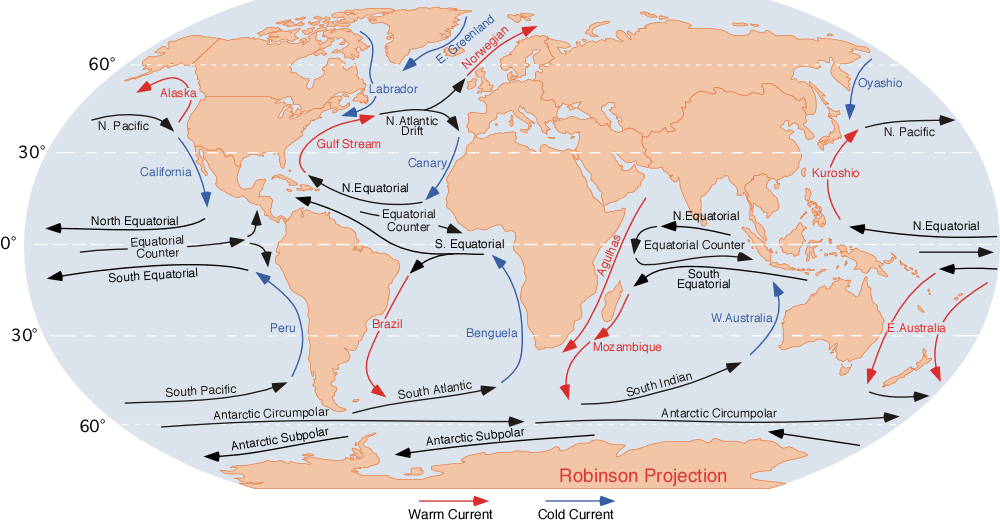Hurricanes. A hurricane is a persistent process powered primarily by temperature and pressure differentials. For an explanation of how hurricanes work, see "How Hurricanes Work".
codebase="http://download.macromedia.com/pub/shockwave/cabs/flash/swflash.cab#version=4,0,2,0" width="400" height="300" -->
src="http://static.howstuffworks.com/flash/hurricane-cross-section.swf" quality="high"
pluginspage="http://www.macromedia.com/shockwave/download/index.cgi?P1_Prod_
Version=ShockwaveFlash" type="application/x-shockwave-flash" width="400"
height="300">
Source: NASA Observatorium
Ocean currents.
 Surface and Subsurface Ocean Currents are also powered by temperature and pressure differentials as well as by gravity, saline differentials, and other forces.
Surface and Subsurface Ocean Currents are also powered by temperature and pressure differentials as well as by gravity, saline differentials, and other forces.
From
 Ocean World
Ocean World "Ocean currents can be divided into two types of flow based on the forces that drive them. Most currents in the upper kilometer of the ocean are driven by the wind. Mixing drives deeper currents, which brings very cold dense water up to the surface. The dense water is replaced by cold dense water that sinks to the bottom near Greenland, Norway and Antarctica. Deeper water is affected by long variability of climate. Climate controls salinity and temperature of the water, which has everything to do with density. "

No comments:
Post a Comment